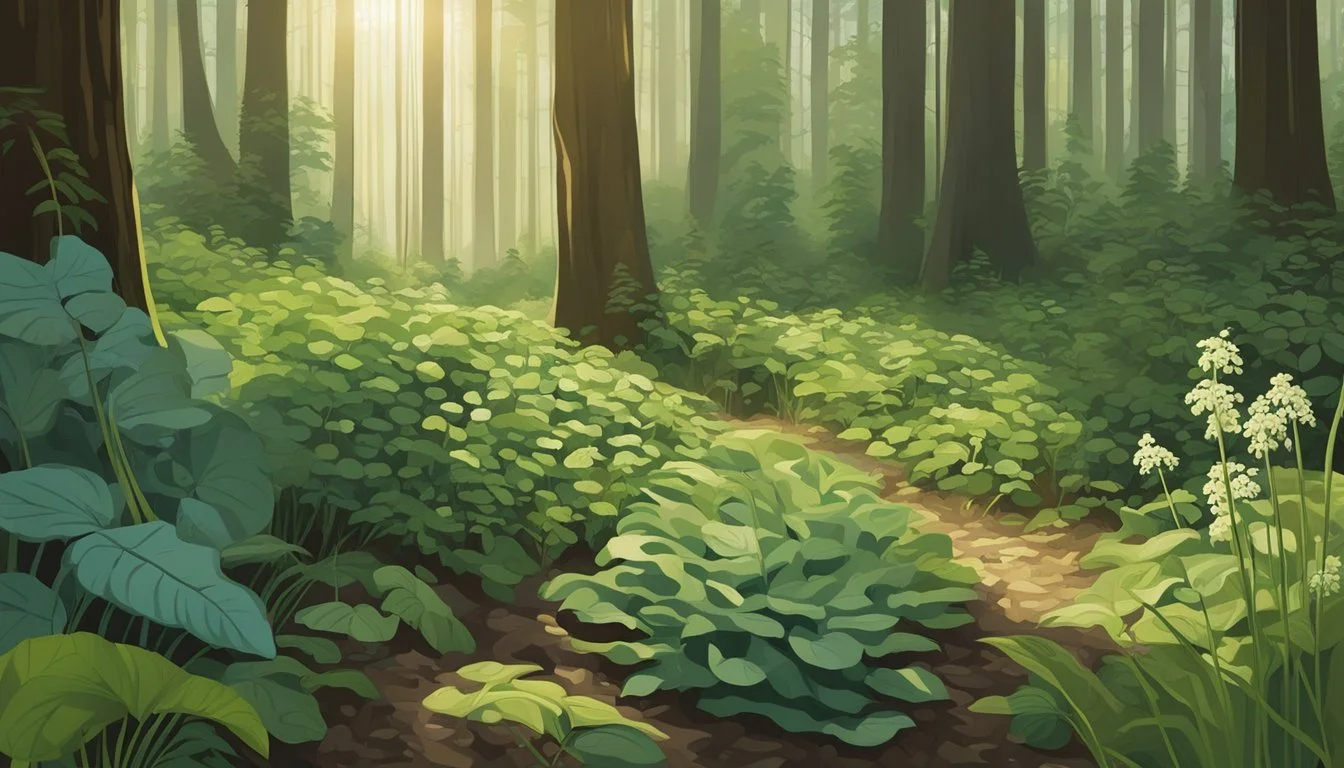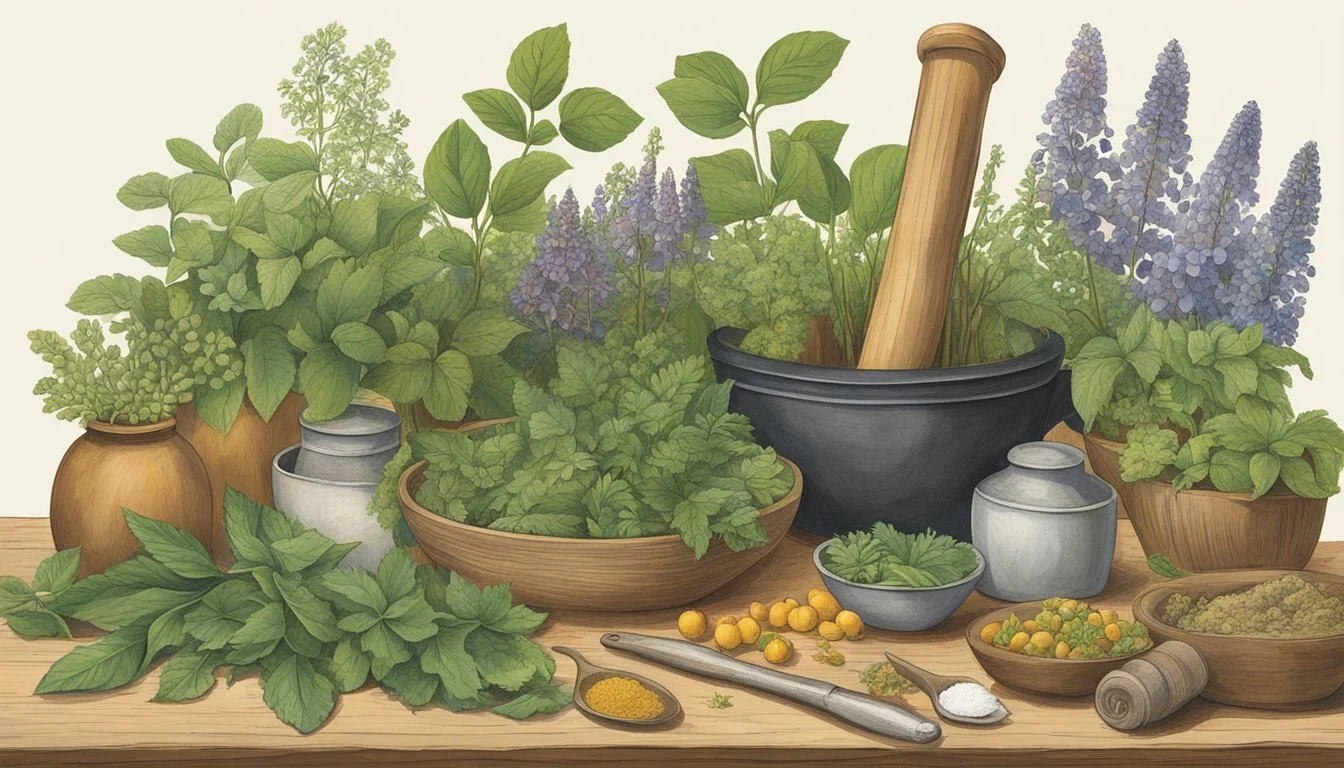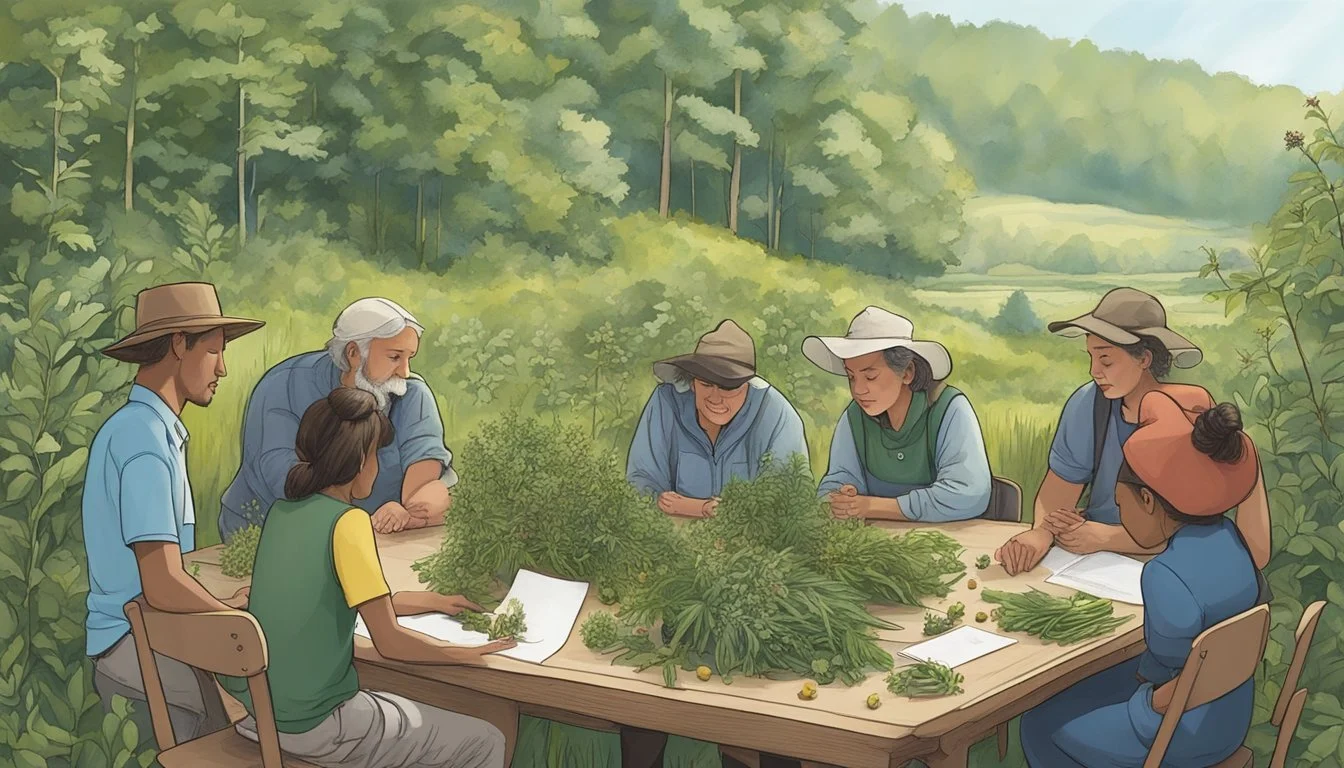Appalachian Native Edible Plants
Discovering Natural Foraging Treasures
Embarking on a journey through the Appalachian wilderness reveals a rich tapestry of flora, each plant carrying unique stories of survival and nourishment. Foraging for Appalachian native edible plants can be both a rewarding and practical skill, offering hikers a way to supplement their diet with nutritious and seasonal treats. Among the various treasures found along the trail, blueberries and pawpaws stand out for their distinctive flavors and historical significance.
As one steps into these lush forests, the sheer diversity of edible plants becomes apparent. From the custard-like pawpaw fruit, often compared to tropical flavors, to the sweet blueberries that peak in the summer, each plant adds a new dimension to the Appalachian experience. Discovering these native plants fosters a deeper appreciation for the wilderness, transforming a simple hike into an exploration of the region's natural bounty.
Not all plants are immediately recognizable or safe to consume, underscoring the importance of knowledge in foraging. The Red Mulberry, for example, provides delicious berries that change color as they ripen, while persimmons and ramps offer their unique flavors and uses. This appreciation for native edible plants not only enhances the enjoyment of the Appalachian Trail but also connects hikers with centuries-old foraging traditions.
Historical Context of Edible Plant Foraging in Appalachia
Edible plant foraging in Appalachia has deep historical roots, heavily influenced by indigenous practices and the region's cultural development over centuries.
Traditional Indigenous Foraging Practices
Indigenous peoples of Appalachia, such as the Cherokee, had a profound knowledge of the region's plant life. They foraged for a variety of plants including nuts, berries, and medicinal herbs. This knowledge was passed down through generations using oral traditions and practical demonstrations.
Key plants included the pawpaw, which was valued for its fruit, and mayapple, used both as a food source and in traditional medicine. Roots like ginseng were harvested for their medicinal properties. Indigenous foraging methods were sustainable, ensuring the plants could continue to thrive. These practices highlighted a deep understanding of the local ecosystem.
Influence of Appalachian Culture on Foraging
As settlers arrived in Appalachia, they learned foraging techniques from the indigenous populations. Over time, these methods became ingrained in Appalachian culture. Foraging shifted from mere sustenance to a cultural identity, with residents regularly seeking out wild mushrooms, greens, and fruits.
Foraging for edible plants such as chicken of the woods mushrooms became a communal activity. The tradition persisted through generations, blending indigenous knowledge with European practices. This meld created a unique Appalachian foraging culture that remains a vital part of life in the region, highlighting the historical blend of influences and the ongoing importance of foraging.
Fundamental Foraging Principles
Foraging for native edible plants in the Appalachian region requires an understanding of safety, ethics, and legal considerations. Each aspect is crucial to ensure responsible and sustainable harvesting practices.
Safety and Identification
Proper identification of plants is critical to avoid consuming poisonous or dangerous species. Beginners should invest in a reliable field guide or take an identification course. Experienced experts often recommend studying plants in their various growth stages and environments. Caution is essential; some plants have toxic look-alikes.
Field guides should include detailed pictures and descriptions. Always double-check plant features before consuming. It is advisable to carry an emergency contact number for poison control when foraging in unfamiliar areas.
Ethical Foraging Guidelines
Ethical foraging emphasizes the importance of protecting the environment and ensuring sustainable harvest practices. Foragers should adhere to the "leave no trace" principle and avoid overharvesting to maintain plant populations.
Minimal impact includes not damaging the ecosystem while collecting. Gathering in moderation prevents declining plant populations and helps with conservation efforts. Engage in local programs that promote sustainable foraging practices and share knowledge about regional flora.
Legal Considerations and Permits
Different areas have unique regulations regarding foraging. It is essential to be aware of local laws and secure necessary permits when required. Foraging in protected lands, such as national parks, often comes with specific restrictions.
Foragers should consult local authorities or park rangers for guidance. Certain areas may have seasonal restrictions or require permits to gather specific plants. Observing these rules helps conserve ecological habitats and ensures compliance with regional conservation efforts.
Health Benefits of Wild Edibles
Wild edible plants in Appalachia offer numerous health benefits through their impressive nutritional profiles and medicinal properties. These plants provide essential vitamins and minerals that contribute to overall well-being while also being used traditionally for their healing properties.
Nutritional Value of Native Plants
Appalachian wild edibles are packed with nutrients. For example, Dandelion is rich in beta-carotene, Vitamin C, calcium, and potassium. These nutrients support immune function, skin health, and bone strength.
Purslane is another nutritional powerhouse. This plant contains high levels of omega-3 fatty acids, vital for heart health. It also includes essential vitamins like A, C, and E, along with magnesium, calcium, and potassium.
The Chicken of the Woods mushroom contains substantial amounts of protein and fiber. It is a good meat substitute for vegetarians. Henbit, found abundantly in spring, offers a rich source of iron, vitamins, and antioxidants which support cardiovascular health and combat oxidative stress.
These native plants contribute significantly to a balanced diet through their dense nutrient profiles.
Medicinal Properties of Appalachia's Flora
Many Appalachian plants are renowned for their medicinal properties. Dandelion acts as a natural diuretic and mild laxative, supporting liver, kidney, and bladder health. It is also noted for its detoxifying abilities.
Henbit, part of the mint family, has been traditionally used to treat digestive issues and boost energy through its antioxidant properties.
Goldenseal, a native medicinal plant, is often used for its antibacterial and anti-inflammatory properties. It is effective in treating respiratory infections and digestive problems.
Plantain, another common Appalachian wild plant, has natural antiseptic and anti-inflammatory qualities. It is frequently used in traditional remedies to heal wounds and insect bites.
These medicinal properties highlight the importance of native plants in natural health practices.
Sampling of Edible Plant Species
The Appalachian region offers an abundance of edible plant species, providing foraging enthusiasts with a variety of nutritious options. From sweet berries to hearty tubers, the area's flora is both diverse and bountiful.
Berries and Fruits
The Appalachian Trail is rich in berry species. Blackberries (Rubus fruticosus), raspberries (both red and black), and blueberries grow abundantly in this region. These fruits are easy to identify and provide a sweet, nutritious snack.
Another sought-after fruit is the pawpaw (Asimina triloba). This native species has custard-like flesh with a taste resembling a mix of banana, pineapple, and mango. Wild strawberries, mulberries, and huckleberries are also found throughout the Appalachian landscapes, each offering a distinct flavor profile and nutritional benefits.
Herbs and Greens
Ramps (Allium tricoccum), also known as wild leeks, are a prized find. They have a strong garlic-onion flavor and are popular in spring foraging.
Other edible greens include dandelion greens, which are packed with vitamins. Stinging nettle can be cooked to remove its sting and is rich in iron and other nutrients. Watercress, often found near streams, offers a peppery taste and is high in vitamins A and C. These greens can be eaten raw or cooked, adding variety and nutrition to meals.
Roots, Tubers, and Bulbs
The Appalachian region is home to valuable root vegetables. Jerusalem artichokes provide a crunchy, nutty flavor and are high in inulin, a type of fiber. Wild onions can be found and used similarly to their cultivated counterparts.
Cattail roots are another foraging option; they can be roasted or boiled. Tuberous roots like wild carrots and burdock root are nutritious and versatile, often used in soups and stews. These root vegetables are not only edible but also provide essential nutrients.
Nuts and Seeds
Foragers can also find a variety of nuts and seeds. Black walnuts are a prevalent species, offering a rich, oily flavor and numerous health benefits. Hickory nuts are another common find, known for their sweet, buttery taste.
Acorns from oak trees can be leached of their tannins and used in a variety of recipes, including flour. Beech nuts, though small, are also edible and can be roasted for a nutritious snack. Collecting these nuts and seeds can be a rewarding endeavor, providing essential fats and proteins.
This diverse range of plant species highlights the rich foraging opportunities in the Appalachian region, each offering unique flavors and nutritional benefits.
Mushrooms and Fungi
The Appalachian Mountains are a treasure trove of diverse and edible mushrooms. Each type offers unique flavors and requires specific foraging techniques for safe and successful gathering.
Edible Mushrooms of Appalachia
The region's forests host numerous edible mushrooms. Chicken of the Woods is a standout with its bright orange hue and firm texture, making it easy to identify. Morels, another favorite, appear in spring with a distinctive honeycomb cap, adding a rich, earthy flavor to dishes.
Oyster mushrooms often grow on decaying wood and are recognized by their fan-shaped caps and subtle taste. Chanterelles are sought after for their peppery flavor and golden color, typically found near hardwood trees. Hen of the Woods, or Maitake, grows in large clusters at the base of oak trees, providing a meaty texture and umami taste.
Foraging Techniques for Mushrooms
Foraging in the Appalachians requires knowledge and caution. Identifying mushrooms correctly is crucial; misidentification can lead to severe health risks. It's advised to use field guides and consult local mycologists.
When hunting, focus on areas near oak, beech, and hickory trees, as these habitats support various mushrooms. Utilizing a basket instead of plastic bags helps keep fungi fresh and preserves spores for future growth. Be aware of invasive species and practice ethical foraging by leaving some mushrooms behind to maintain the ecosystem.
To safely forage, consider joining local mushroom hunting groups or workshops. These resources offer valuable hands-on experience and increase your understanding of local species and their environments.
Culinary Uses and Preparation
Exploring the culinary applications of Appalachian native edible plants reveals their versatility and nutritional benefits. Effective preservation ensures that foraged foods are available year-round.
Incorporating Edibles into Recipes
Wild edibles like dandelions, pawpaw, and ramps offer diverse flavors. Dandelion leaves add a bitter, earthy element to salads. Their roots, roasted, can substitute for coffee. Pawpaw fruit, with its custard-like texture, excels in desserts, such as puddings and ice creams. Ramps, known for their garlicky taste, enhance a variety of dishes. They are perfect in soups, scrambled eggs, and savory tarts.
Chicken of the Woods mushrooms mimic chicken's texture. Ideal for stir-fries and grilling, they absorb marinades well. Blackberries and raspberries, rich in vitamins, sweeten pies and jams. Turn them into sauces for savory meats. Foraged herbs can season roasts and homemade bread. Experimenting with these native plants enriches the culinary experience.
Preservation and Storage of Foraged Foods
Proper preservation ensures the longevity of foraged treasures. Freezing blackberries and raspberries maintains their taste and nutrients. Spread them on a baking sheet before transferring to airtight containers to prevent clumping. Drying is effective for herbs like sage and ramps. Hang them in a dark, ventilated area for several days before storing in airtight jars.
Pawpaw pulp can be frozen. Scoop the flesh from the skin and store it in freezer bags. Chicken of the Woods mushrooms can be sautéed before freezing to retain their texture. Pickling is another option for ramps, capturing their strong flavor. Root vegetables such as dandelion roots should be cleaned, blanched, and frozen. Clear labeling with harvest dates is crucial.
This ensures you enjoy your foraged finds throughout the year.
Conservation and Sustainability
Ensuring the conservation and sustainability of native edible plants in the Appalachian region is crucial for maintaining biodiversity and ecological balance. Proper foraging practices, along with efforts to promote native species, play significant roles in preserving these natural resources.
Impact of Foraging on Ecosystems
In the Appalachian region, foraging has both benefits and potential drawbacks for ecosystems. When done responsibly, it can help manage plant populations without causing harm. However, overharvesting can lead to depletion of key species, disrupting forest ecosystems.
Such activities can reduce native plant populations like ginseng and black cohosh, leading to a loss of habitat and food sources for wildlife. Additionally, overharvesting increases competition among plants, where invasive species might outcompete native ones.
Promoting Native Species and Habitat
Promoting the growth and conservation of native plant species involves several approaches. Planting and protecting species like pawpaw and blueberries helps maintain ecological diversity. Sustainable practices include cultivating native plants in home gardens and community spaces, reducing reliance on wild specimens.
Organizations and initiatives focused on biocultural conservation, such as OSGF's Biocultural Conservation Farm, support heirloom vegetables and fruits. These efforts ensure the preservation of native species and contribute positively to the environment, reinforcing the importance of sustainable practices in Appalachian woodlands.
Collaboration with Local Communities
Engaging with local communities in the Appalachian Mountains is crucial for promoting sustainable foraging practices and supporting the regional economy. These collaborations often include educational programs and workshops, as well as initiatives aimed at ethical foraging that benefit local economies.
Educational Programs and Workshops
Educational programs and workshops play a significant role in teaching sustainable foraging techniques. Experts, including botanists and conservationists, often collaborate with local communities to provide hands-on learning experiences.
In West Virginia, organizations regularly hold events in the Monongahela National Forest, educating participants on identifying native edible plants such as pawpaws and mayapples. These sessions not only teach about plant identification but also emphasize conservation methods crucial for the ecosystem's health and longevity.
Programs may include guided foraging tours that allow participants to practice their newfound skills in real-life settings. Workshops often cover the preparation and culinary uses of locally foraged plants, enhancing appreciation and understanding of the region's natural bounty.
Supporting Local Economies through Ethical Foraging
Ethical foraging practices directly support local economies by fostering sustainable livelihoods. By working with landowners and farmers, community members ensure that harvesting practices do not harm the environment.
In Southern Appalachia, businesses like farm-to-table restaurants partner with local foragers to source native ingredients, thus supporting the regional food economy. Chefs in places like Hill & Hollow Restaurant in West Virginia use these native plants, blending them creatively into their menus, which highlights and preserves local culinary traditions.
Additionally, community-run markets and festivals celebrate these regional foods, offering a platform for local foragers and artisans. These events provide economic opportunities while educating the public on the importance of preserving Appalachian edible plants.








